July 28, 2024
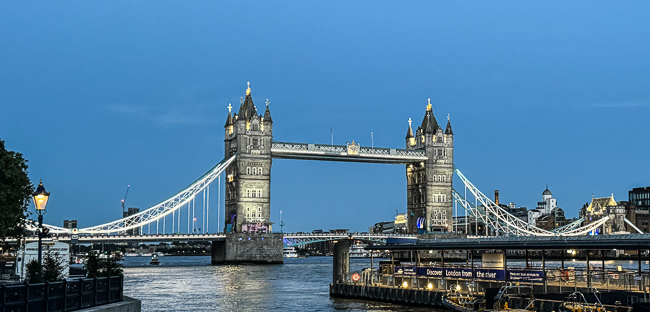
My friend Susan arranged for us to attend the Ceremony of the Keys at the Tower of London. It is a humbling experience that takes months to obtain tickets, and only 50 people are allowed to attend per evening.
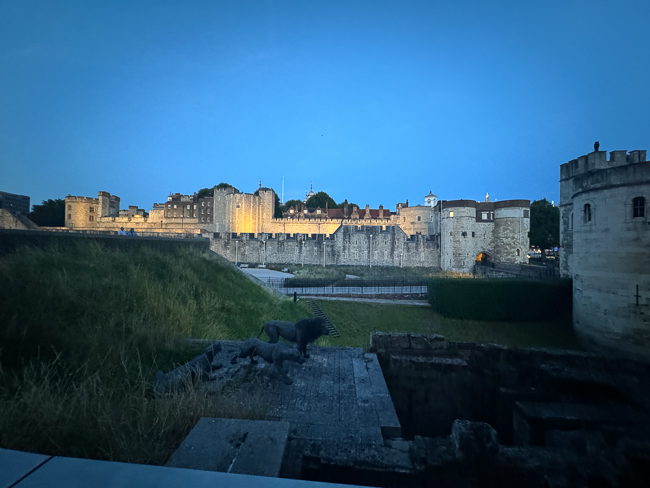
The Ceremony of the Keys is an ancient ritual in which the main gates are locked for the night. It is said to be the oldest extant military ceremony in the world and is the best-known ceremonial tradition of the Tower.
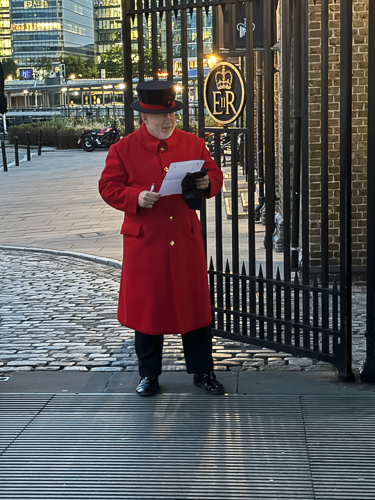
Once your name is called and you pass the gate there are no photos allowed. The gist of the ceremony is thus:
At exactly 9.52 pm, the Chief Yeoman Warder (also known as Beefeaters), dressed in a Tudor watchcoat and bonnet and carrying a candle lantern, leaves the Byward Tower and falls in with the Escort to the Keys, a military escort made up of armed members of the Tower of London Guard. The Warder passes his lantern to a soldier and marches with his escort to the outer gate. The sentries on duty salute the King’s Keys as they pass.
The Warder first locks the outer gate and then the gates of the Middle and Byward Towers. The Warder and escort march down Water Lane (where we were standing) until they reach the Bloody Tower archway, where a sentry challenges the party to identify themselves:
Sentry: “Halt! Who comes there?”
Chief Warder: “The keys”.
Sentry: “Whose keys?”
Chief Warder: “King Charles keys”.
Sentry: “Pass King Charles Keys. All’s well”.
The Warder and escort march down to the foot of Broadwalk Steps, where the main Tower Guard is drawn up to meet them. The party halts, and the officer in charge gives the command to present arms. The Chief Warder steps forward, doffs his bonnet, and proclaims:
Chief Warder: “God preserve King Charles”.
Guard and all the onlookers: “Amen!”
On the answering “Amen”, the clock of the Waterloo Barracks strikes 10 pm, and the Last Post is sounded, marking the end of the ceremony.
The Guard is dismissed, and the Chief Warder takes the keys to the King’s House for safekeeping overnight.
We were so fortunate to have a Warder who allowed us to turn our phones back on and take pictures. He then stood for a good half hour and answered questions.
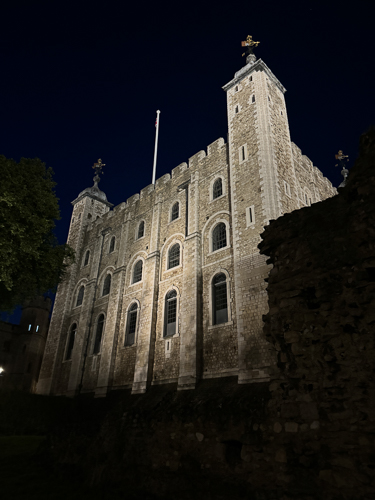
*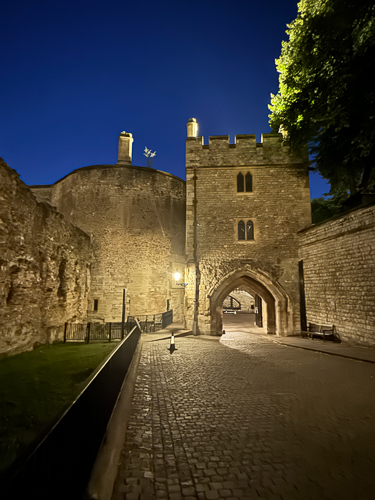
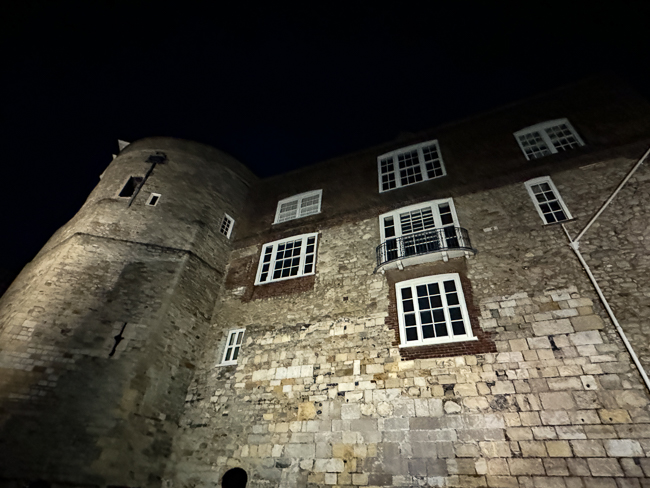
The King’s House is the area above the balcony window. Hess was held in the circular tower on the left.
On May 10, 1941, Rudolf Hess got into the cockpit of a Messerschmitt plane and took off from an airfield in Augsburg, Bavaria, on a solo flight to Scotland. He ejected from his plane and parachuted into the field outside Glasgow. The purpose of Hess’ mission remains one of the great unresolved mysteries of the Second World War.
Whatever his motives, Hess was captured and taken to the King’s House at the Tower of London on May 17, 1941, where many prisoners had been interrogated, including Guy Fawkes. Under the tightest security, he was questioned for four days until he was removed from the Tower. He spent the rest of the war as a prisoner at Mytchett Place, Surrey. At the Nuremberg Trials of 1946, Hess was sentenced to life imprisonment in Spandau, West Berlin, where he remained until he died in 1987, aged 93.
Hess was the last state prisoner to be held at the Tower.
A toilet was installed in the tower so that if Hitler had been captured, he, too, could be held in the same tower.
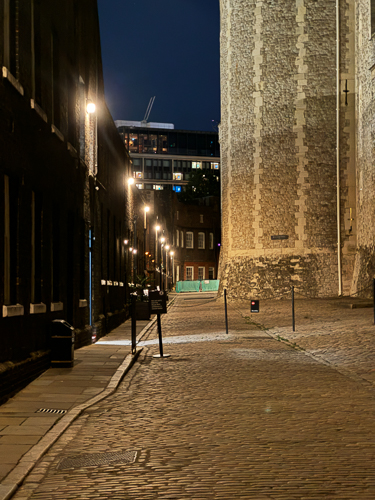
The Yeoman who guard the Tower of London live on the property in apartments on the left.
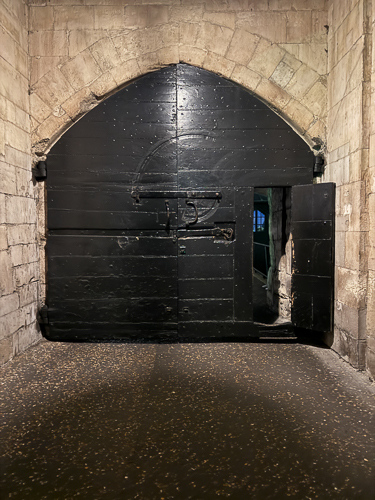
Once the ceremony was over, we left via the small door set in the doors just recently locked during the ceremony.
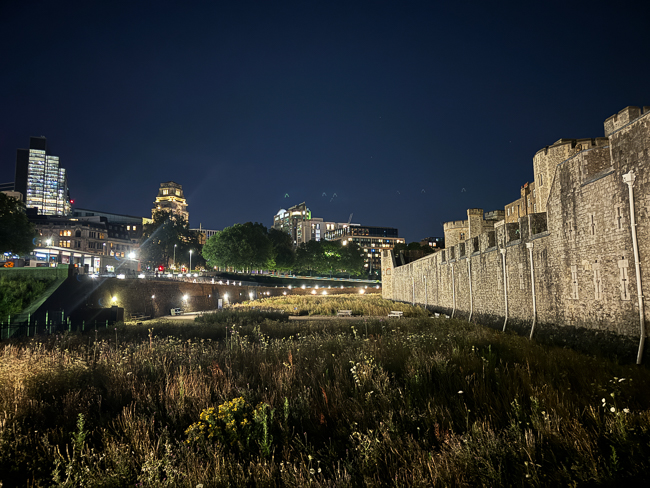
The origins of the ceremony are unknown. It may have begun during the Middle Ages, and it is thought that a ceremony in some form has been held since the 14th century. Written instructions that the keys should be placed in a safe place by a Tower officer after securing the gates date back to the 16th century. In its current form, the ceremony is likely to date to the 19th century when the institution of the Yeomen Warders was reformed by the then Constable of the Tower, the Duke of Wellington.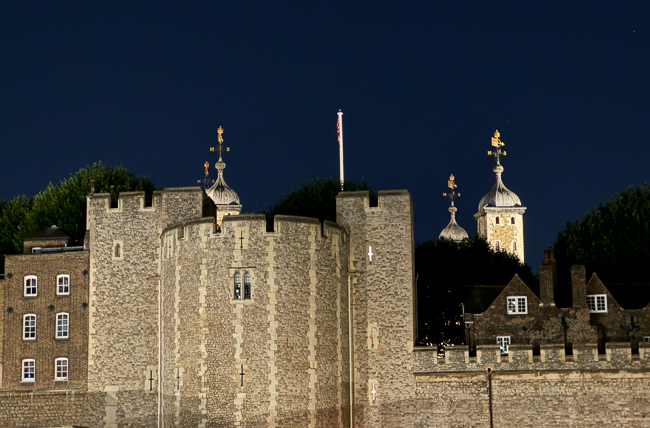
The ceremony has never been canceled and has been delayed only on a single occasion due to enemy action during the Second World War. A bomb dropped onto the grounds, injuring three soldiers, all of which did not abandon their posts. The incident caused the Yeoman to send a telegram to King George VI apologizing. He responded that he was glad no one was killed but added – don’t let it happen again.
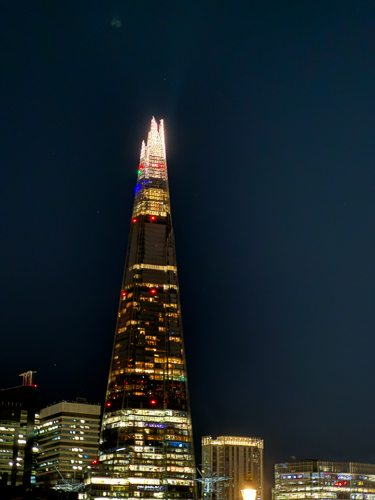
The shard at night, as seen from outside the Tower of London
The Yeoman told us that the ceremony continued throughout Covid, but they had to maintain the recommended distancing.
If you ever have the opportunity, the Ceremony of the Keys is worth the £5 price of admission.